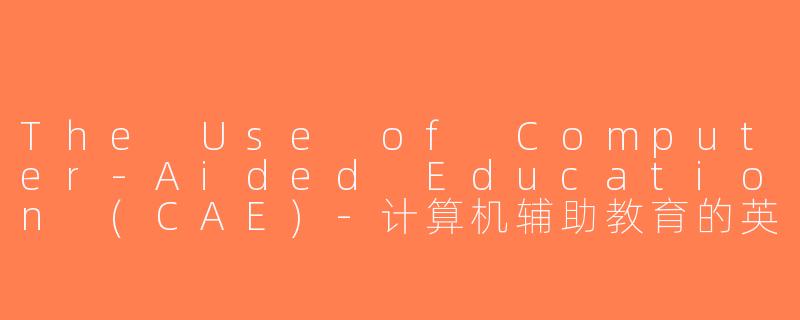
计算机辅助教育的英文缩写
The Use of Computer-Aided Education (CAE)
In today's digital age, the use of technology in education has become increasingly prevalent. One such technology that has significantly impacted the way students learn is Computer-Aided Education (CAE). CAE refers to the use of computers and software to enhance the teaching and learning process.
With CAE, educators can create interactive learning materials, such as multimedia presentations, simulations, and quizzes, that engage students and facilitate a deeper understanding of the material. Furthermore, students can access these materials anytime and anywhere, allowing for greater flexibility in their learning.
One of the key benefits of CAE is its ability to personalize the learning experience. By tracking students' progress and performance, educators can tailor the content to meet each student's individual needs and pace of learning. This personalized approach not only improves student engagement but also leads to better academic outcomes.
In addition, CAE offers a wide range of resources and tools that can cater to different learning styles and abilities. Visual learners, for example, may benefit from interactive videos and animations, while auditory learners may prefer podcasts or audio recordings. By providing a variety of resources, CAE ensures that all students have the opportunity to learn in a way that best suits them.
Overall, the use of Computer-Aided Education has revolutionized the way knowledge is imparted and acquired. By harnessing the power of technology, educators can create a more dynamic and effective learning environment that meets the diverse needs of today's students. As technology continues to evolve, the possibilities for CAE in education are endless, promising a future where learning is more engaging, accessible, and personalized than ever before. So, it is clear that the future of education lies in technology integration and CAE is at the forefront of this transformation.